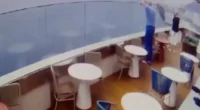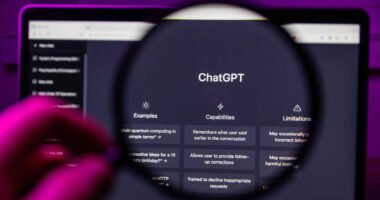In the early hours of the morning, lights began to illuminate the streets of Yongsan, the central district of Seoul where the presidential residence is located. A convoy of police vehicles and armored trucks approached quietly as thousands of officers, in tight formation, took positions around the premises. The sound of footsteps echoed in the damp winter darkness, marking the beginning of a historic operation: the capture of the ousted president Yoon Suk-yeol, who faced accusations of insurrection following his failed attempt to impose martial law. The images broadcasted by the media resembled scenes from a political thriller. In the footage, a group of investigators advanced silently along the main path towards the entrance of the presidential villa, while the shadows of guards from the Presidential Security Service (PSS), loyal to the president, were silhouetted against barricades made of barbed wire and crossed buses. Meanwhile, riot police stood by the high perimeter wall, while others prepared to use portable ladders to navigate obstacles.
Since his disqualification on December 14, the South Korean parliament had approved a motion to suspend his declaration of a temporary state of emergency, and Suk-yeol had turned the presidential residence into a fortress. Physical barriers complemented the human chains formed by PSS members and lawmakers from the ruling party, who blocked their own bodies to prevent the first arrest on January 3. This confrontation highlighted the political chaos enveloping one of Asia’s most established democracies. This time, the deployment was monumental: 3,200 police officers and officials from the Office of High-Ranking Officials Corruption Cases (CIO) surrounded the area before dawn. In addition to facing resistance from presidential supporters, they had to contend with the president’s sympathizers. Some waved flags of South Korea and the United States, while others, armed with glowing sticks, shouted: “Illegal order!” as they fell to the ground in front of the doors, a gesture of desperate defiance.
At 5:10 AM, the prosecution formally presented an order to the president’s legal team, a measure he himself described as “illegal” and “political persecution“. For two hours, tensions reigned in the surroundings. They managed to overcome barricades, cutting through and breaching the main perimeter, forcing their way into the building by 7:00 AM. A dramatic conclusion unfolded inside the residence, where negotiations lasted for hours. Finally, at 10:33 AM, the president was detained. With an impassive expression, he left his home surrounded by the shouts of supporters, still echoing resistance. Minutes later, he published a pre-recorded video on social media, declaring: “I decided to appear before the authorities to avoid potential bloodshed, even though this investigation is illegal.” This event represents an unprecedented moment in history. No president has been detained previously. However, the path that led him to this moment was marked by controversial decisions and increasingly authoritarian governance.
The night surprised the country as he declared martial law, deploying troops under the pretext of protecting against “communist forces” and “anti-state elements“. However, legislators challenged his authority and voted against the measure, forcing him to revoke the decree just six hours after implementing it. The immediate parliamentary response came from the opposition, which controls the majority in parliament, pushing to disqualify him, arguing that his decision represented an abuse of power and a threat to democracy. Following his arrest, he was transferred to the Gwacheon headquarters, where a prolonged interrogation began. According to officials, he exercised his right to remain silent and refused to be recorded. His silence in the interrogation room contrasted with the activity outside, where a handwritten letter appeared defending his case as not only criminal but also constitutional. The charges of insurrection could carry a life sentence or even the death penalty (although there has been a moratorium on the death penalty for nearly 40 years). The Constitutional Court will have to decide in the coming months whether the charges are definitive. Meanwhile, the nation remains divided. Supporters gather for vigils, while opposition leaders celebrate what they consider a victory for democracy. Woo Won-shik summarized the sentiment of the opposition: “We must concentrate our efforts to stabilize state affairs and restore public trust.” In the corridors of South Korean politics, a tremor resonates, serving as a reminder of the fragile balance between democracy and the nation’s history of overcoming dictatorships, wars, and economic crises to become one of the bastions of democracy in the region.









